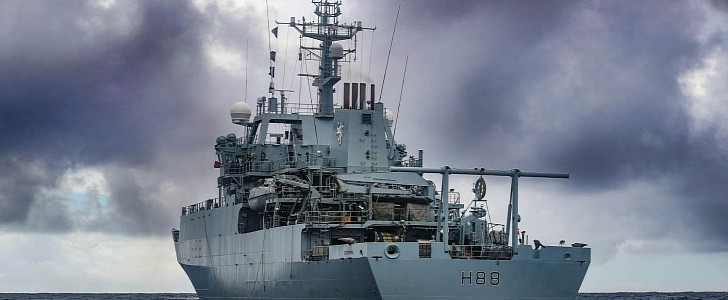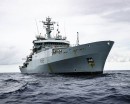While other ships from the UK Royal Navy’s fleet showed off their military skills in various training around the world, HMS Enterprise took on a different kind of challenge, and that is facing the harsh conditions of the Arctic. This versatile ship got within 1,000 miles (1,609 km) of the North Pole, which is closest to it than any other Royal Navy ship has gone this year.
Officially a survey vessel, HMS Enterprise has a versatile spirit. Yes, its main job is to conduct oceanographic and hydrographic surveys. Equipped with things like single and multi-beam echo sounders and various types of sensors, it maps the seafloor in search of important scientific data. But it also serves as a floating base for mine countermeasures operations. This turns it into a sort of “mothership” for the Mine Counter-Measure Vessels, with its crew ready to support these specialist ships.
The area known as the High North is strategically important, which is why the Royal Navy keeps an eye on it constantly through its patrol vessels to make sure that nothing blocks freedom of navigation. This freedom allows ships such as HMS Enterprise to conduct their scientific missions.
The survey vessel recently concluded its latest mission, where it got very close to the North Pole. For two months, the crew collected data that will be used mainly for updating charts. After a change of crew, it continued its mission in the Norwegian Sea and the Denmark Strait. Then, after a second crew change in Iceland, HMS Enterprise returned to the UK, in Aberdeen, where it was visited by various players in the maritime industry.
It wasn’t all about science but also about history. While in Arctic waters, HMS Enterprise paid tribute to the heroic sailors who faced these incredibly harsh conditions during World War II in order to deliver supplies to the Soviet Union.
The area known as the High North is strategically important, which is why the Royal Navy keeps an eye on it constantly through its patrol vessels to make sure that nothing blocks freedom of navigation. This freedom allows ships such as HMS Enterprise to conduct their scientific missions.
The survey vessel recently concluded its latest mission, where it got very close to the North Pole. For two months, the crew collected data that will be used mainly for updating charts. After a change of crew, it continued its mission in the Norwegian Sea and the Denmark Strait. Then, after a second crew change in Iceland, HMS Enterprise returned to the UK, in Aberdeen, where it was visited by various players in the maritime industry.
It wasn’t all about science but also about history. While in Arctic waters, HMS Enterprise paid tribute to the heroic sailors who faced these incredibly harsh conditions during World War II in order to deliver supplies to the Soviet Union.






